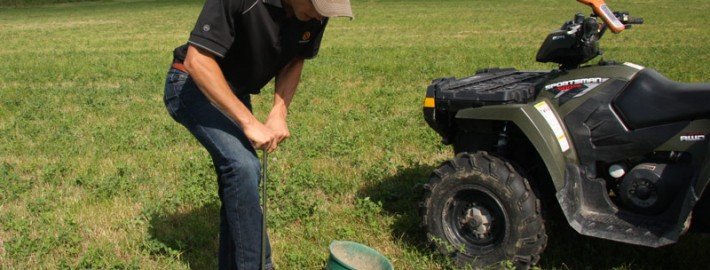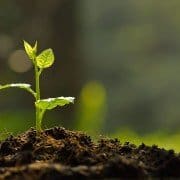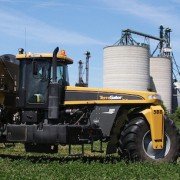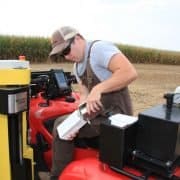The dirt on soil tests
With soil nutrient levels dropping, how do you need to change your soil-testing program and fertility rates?
By
Fewer farmers are sampling their soils. In Ontario, the numbers say fewer than 30 per cent of farmers test every three years, even though this trend is leading to a data gap at a time when everything else seems to be changing too, such as the rapid climb in yield potentials, and elite corn hybrids that are so much more efficient at extracting nutrients.
Also worrying is that the experts are lining up to tell us that, one way or another, more farmers are mining their soils.
“Test levels are declining across North America,” says Jack Legg, branch manager and agronomist with SGS Agri-Food Laboratories in Guelph, Ont.
Legg believes a key issue is crop removal, especially with rising yields. For instance, there’s a common view that soybeans “don’t use anything,” which Legg notes is just wrong. A corn crop might remove around 75 pounds (or more) of phosphorus, but soybeans can still take 45 pounds and wheat 60 pounds.
“It’s suggested that for every 28 to 35 pounds removed, soil test P would drop one part per million (ppm), and in fact, the average of all soil tests has dropped about one ppm per year,” says Legg.
Soybeans may not show a strong response to applied fertilizer, but they still remove more nutrients on a per-bushel basis than other crops, such as 0.9 lb. of P2O5 per bushel, and 1.56 lbs. of K2O.
Legg sees little that’s wrong with our sampling procedures, only that sampling needs to be done more frequently. Once in three years is fine, he says, but three years can go by quickly and soil sampling and testing can easily be forgotten.
Adjust the thinking
Some agronomists aren’t so surprised that only a minority of farmers routinely sample. It’s the 80/20 rule, says Wayne Black, a former grower and now seed sales and production specialist with Devolder Farms near Chatham, Ont. In other words, 80 per cent of production gets done by 20 per cent of farms, and most of those 20 per cent are routine samplers.
But even they need to recognize that the ground is changing under their feet, Black says. “The new genetics that we’re using in corn hybrids today utilize 37 to 40 per cent of the N after tasselling,” he points out. “In the past, it was much lower, so that’s where the idea of soil sampling every three years came from. But what I’m looking at today is, there are other opportunities out there where we need to soil sample at different times of the season.”
This is where Black sees the potential value in the growing interest in putting the fertilizer needs for a corn crop into a band. If a farmer has good soil structure and subsurface nutrient levels, the roots are able to access micronutrients that farmers aren’t necessarily applying. That approach, adds Black, may be more helpful than randomly applying nutrients across a field.
Such an approach is worth considering because heavy rains in June and early July can increase the loss of non-banded nutrients in any run-off. It’s also an opportunity to make more efficient use of available technologies, including GreenSeeker and 360 YieldCenter, to take samples through green tissue analysis or normalized difference vegetation index (NDVI) readings at various points of the season.
“What I’m looking towards is using new tools and new technologies,” says Black, noting that by testing throughout the season he could reduce environmental concerns while also ensuring the crop is optimally fed. “That’s taking it to the extreme where the guys who don’t want to do grid sampling aren’t going to like my idea,” Black says. But, he counters, “Are we going to just keep doing it like we’ve always done and wait until the government tells us to do it, like the neonic issue?”
Getting off to a good start
If you ask Felix Weber, it isn’t so much the sampling procedures or the soil-testing standards, it’s more the consistency of following the procedures. From his perspective, there are three things that can confound the issue: getting a good start, having a reason for testing the soil and whether all the variables at play in the soil are being considered. Weber cites the use of manure as an example, adding that it introduces a large number of variables into the soil test results.
Everything has an impact, he says, from the depth of the soil to the cropping system to rotations to the timing of the samples in spring or fall or the use of synthetic fertilizers or manure. Soil sampling, nitrate sampling — they’re all tools to be used.
But it’s the start that’s the most important.
“You have to start with a good sample that is representative and comparable, and that will tell me first if we’re actually building or if we’re mining the soil,” says Weber, president of Ag Business & Crop, based near Palmerston, Ont. “If the nutrition removal standards are too low, it should be proven and a good job should be done with accurate sampling.”
Weber always asks his clients why they’re sampling. Often, he finds, it isn’t about the nutrients in the soil.
“One client said it the best way — he said: ‘I just want to know whether I’m building or if I’m mining,’” says Weber. “I have a soil type that produces tremendously in one location but not in another, it doesn’t matter what soil type it is, there’s more than one condition that releases those nutrients than just the soil type. You can’t just say that Listowel loam is supposed to give me so much yield — there’s so much more to it.”
And that’s why sampling (and getting it right at the start) and lab analysis are so important. Weber’s theory is that sampling is the base. Over a longer period of time, it becomes a tool to record whether that grower is mining, or building.
“I’m a strong believer that it starts in the field, and if you do a poor job of sampling in the field, anything afterwards can’t be as good as you want it to be,” Weber says.
There’s also some doubt as to the consistency of different labs: is one as good as the other? Weber points to an experiment conducted by OMAFRA, in which a sample was split and sent to two different labs to determine the variation in either sampling methods or testing standards. There were some slight differences between the two, but in the final analysis, the samples showed very similar results: no more than 10 per cent variation, according to Dr. Bonnie Ball, field crops soil specialist with OMAFRA.
It’s worth noting that labs are accredited on the basis of consistency in their results. The higher the variation between different labs, the greater the risk of losing accreditation.
“There are so many variables all along,” says Weber. “The more we can take out variables, the better.”
Source: Country Guide, October 7, 2015









